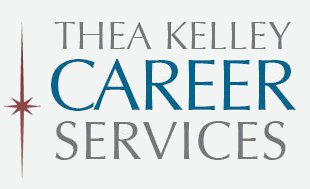 When you’re not just looking for a new job but a new career, you need a new resume. Here are some crucial career change resume tips that will help you position yourself for your big leap.
When you’re not just looking for a new job but a new career, you need a new resume. Here are some crucial career change resume tips that will help you position yourself for your big leap.
Start with a relevant headline.
The top of your resume is a valuable spot for a first impression; don’t waste it on an empty word like “Summary.”
Let’s say you’re a salesperson who wants to transition into marketing, and you’re applying for a Marketing Coordinator role. Your headline might be something like “Sales and Marketing Professional,” or simply “Marketing Coordinator.” In doing this, you’re not claiming you are currently a marketing coordinator, but that you’re qualified for it and applying for it. Put this headline below your name and contact information.
Build a compelling summary (just don’t bother labeling it as such).
If the first thing employers see under your headline is your Experience section, headed by a job that’s very different from the job you’re applying for, it’s easy for the employer to reject you, thinking “This person doesn’t have the right experience.” Instead, focus their attention first and foremost on your most relevant qualifications. Here are some elements you might include in this summary.
Targeted introductory paragraph or bullet points: Here is where you summarize your key selling points or unique selling proposition. The bullet points might look like this:
- BA in Business Administration with Marketing emphasis expected in May 2019.
- Early experience as Marketing Coordinator, followed by accomplished sales career.
- Extensive experience collaborating with Marketing as Sales Manager for top firms including X and Y.
- Data-driven and highly analytical, as demonstrated by (very briefly mention an achievement or chunk of experience that proves this).
Keep this section very short, especially if you use a paragraph instead of bullets. Anything dense here is likely to be ignored.
Competencies block: List your skills and areas of knowledge using brief words and phrases such as “team leadership,” “project management,” “Salesforce,” and so on, so employers can see at a glance that you have the know-how. (Tip: A two-column or three-column arrangement saves space compared to a single-column list.)
“Translate” your experience section to show how your skills are transferable.
Consider adding to your job title lines. Let’s say you’re seeking a position as a Human Resources Generalist, and your past job title was Office Manager – but half of the job really involved doing the work of a Human Resources Generalist. You can show that you were a de facto HR Generalist – without claiming you officially held that title – by writing your job title like this:
Office Manager (and Human Resources Generalist), Brown Educational Software, Inc.
Or if the HR duties were only a small part of the role:
Office Manager (including Human Resources responsibilities), Brown Educational Software, Inc.
Either way, putting these important keywords in the job title will allow your resume to perform well in applicant tracking systems as well as in the eyes of the reader. (And you can do the same on LinkedIn, by the way.)
Emphasize what’s relevant. Describe your past job duties in terms familiar to your target field. For example, let’s say you used to do social media work and now you want to do grant writing for nonprofits. Some aspects of your previous job may not be transferable, but your ability to write concise, attention-getting content may be relevant and valuable.
Your career change resume is a good start, but there’s more to do.
As important as your resume is, it isn’t going to get you into a new career by itself. More than other job seekers, career changers need to network effectively and compete effectively with other candidates who may have more experience. Plan and execute a strategic transition campaign in which your well-targeted career-change resume is one of many strong components.

